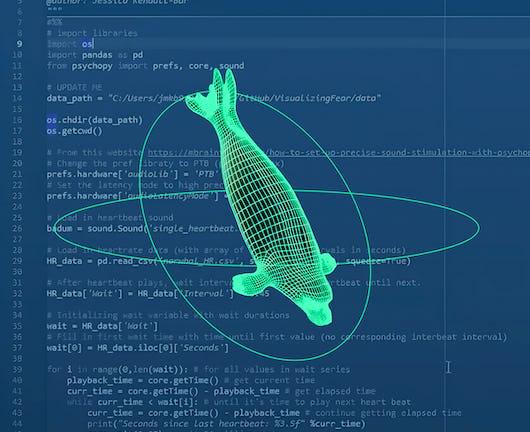MOOC List is learner-supported. When you buy through links on our site, we may earn an affiliate commission.

MOOC List is learner-supported. When you buy through links on our site, we may earn an affiliate commission.
This course trains students in data-based storytelling that promotes research and science communication for the benefit of communities and policymakers on local and global scales. Students will draft a science writing script, create custom raster and vector graphics, data visualizations, and animations in Adobe Photoshop, Adobe Illustrator, Adobe After Effects, Adobe Premiere Pro, and Autodesk Maya. For their final project, students will assemble these data-driven assets into an animated video abstract.
What you'll learn
- Learners will be able to replicate the data-driven animation process from conceptualization to asset creation, data visualization, and composition.
- Learners will be able to make informed decisions between available programs and techniques for visualizing data.
- Learners will be able to distill the methods, results, and implications of scientific research into an accessible, succinct, and impactful animation.
Syllabus
Week 1—Planning your animation
Module 1
In this Module you will lay out the groundwork for your data-driven animation. You will pick a scientific study, tell its story, interpret a dataset, and compose a style guide that determines the fonts, colors, and mood of your animation. Using your script and style guide, you will plan out the action for each scene in your animation. After that, you will create a storyboard conveying the major action in your animation and, from that storyboard, create an animatic.
Week 2—Creating assets: illustrations & graphs
Module 2
In this Module you will use the animatic and list of assets from the last session to decide which custom assets to create. You will learn digital illustration techniques in Adobe Illustrator and Adobe Photoshop to create these assets with specific attention paid to the future ability to animate the assets. We will create data visualizations, learning about different tools, programs, and guiding principles.
Week 3—2D Animation with Adobe After Effects
Module 3
In this Module you will develop one of the scenes from your animatic into an animated scene that incorporates motion graphic principles. You will learn how to animate text, lines, and shapes in Adobe After Effects. You will also create an animated version of your improved key figure. We will learn to use JavaScript programming within Adobe After Effects to link data to the attributes of an animated 2D scene.
Week 4—3D Animation with Autodesk Maya
Module 4
In this Module you will familiarize yourself with the interface of a 3D animation software, Autodesk Maya. You will use your own custom 3D model or a demo file to animate a locomotion cycle (walk, swim, fly, etc., depending on your organism). You will learn about the major steps of creating a 3D animation from modeling and rigging to animation and rendering. You will use the locomotion cycle to create a data-driven animation. We will learn how to use Python programming in Autodesk Maya to create data-driven 3D scenes.
Week 5—Final Composition: Editing and Communication Strategy
Module 5
In this Module you will assemble the animated scenes you have generated into a fully produced animation. You will learn the basics of editing and composition using an Adobe workflow between Adobe Premiere Pro and Adobe After Effects. We will learn about the importance and power of musical accompaniment in creating your final composition. You will critique each other’s final projects in a peer reviewed assignment.
MOOC List is learner-supported. When you buy through links on our site, we may earn an affiliate commission.
MOOC List is learner-supported. When you buy through links on our site, we may earn an affiliate commission.
